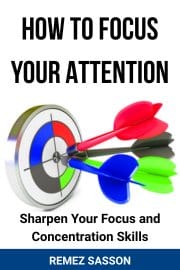
Engaging students in the classroom has always been a challenge for educators. With the rapid advancements in technology and teaching methodologies, 2024 offers innovative tools and techniques that can make learning more dynamic and interactive.
How do teachers keep up with these changes? Here are eight cutting-edge strategies to foster student engagement effectively:
A practical, powerful guide to using creative visualization to reshape your inner world and transform your life. Discover the Guide
Gamification in Education: Leveraging Game Mechanics for Learning
Gamification has become a powerhouse in education, transforming traditional lessons into engaging, game-like experiences.
By incorporating elements such as point systems, leaderboards, and rewards into the curriculum, teachers can motivate students to participate more actively. Think of it like turning a tedious history lesson into an epic quest where each correct answer unlocks new levels and achievements.
But how do you keep track of progress efficiently? Knowt’s online tools make it easy to create flashcards for teachers to customize for the specialized needs of different students. These tools can be integrated seamlessly with gamified activities to reinforce learning objectives through repetition and interactive challenges.
Project-Based Learning Strategies
Project-based learning (PBL) turns traditional classrooms into vibrant spaces where students immerse themselves in substantial projects over extended periods. PBL fosters collaboration, critical thinking, and problem-solving as students address complex issues or challenges pertinent to their lives and future careers.
For example, a science class might investigate environmental problems by creating sustainable solutions for local communities – offering a hands-on experience far more effective than textbook exercises alone!
By incorporating these innovative methods alongside advanced tools like Knowt’s customizable flashcards for teachers, educators cultivate environments that promote active participation and empower autonomous lifelong learners both inside and outside the classroom!
Integrating Flashcards into the Classroom Routine
Flashcards have long been a staple in education due to their effectiveness in reinforcing memory retention.
Modern digital flashcard platforms offer even greater flexibility by allowing teachers to create customized decks that align with specific lesson plans. This enables students to review material at their own pace, both inside and outside the classroom.
Using flashcards regularly helps cement knowledge through active recall – a process that strengthens neural connections over time. Moreover, combining these with other engagement techniques ensures diverse stimulation for varied learning styles.
Now imagine coupling this approach with autonomous learning tools designed specifically for self-directed study. Students could then take control of their educational journey like never before!
Autonomous Learning Tools: Empowering Self-Directed Study
Autonomous learning tools empower students by offering resources tailored for independent exploration and subject mastery. Platforms with adaptive quizzes adjust difficulty based on performance, ensuring each learner progresses at an optimal rate without feeling overwhelmed or under-challenged.
Incorporating AI-driven insights helps identify areas needing improvement early on, guiding personalized intervention strategies from educators when necessary.
Additionally, integrating such technology fosters ownership of academic success, intrinsically motivating students to continue striving towards their goals. This approach bridges gaps between current capabilities and desired outcomes, effectively creating lifelong learners poised to succeed beyond the classroom walls!
Real-time Feedback Systems: Instant Insights for Students and Teachers
In today’s educational environment, real-time feedback systems are game-changers. These systems allow teachers to monitor student performance instantaneously, offering immediate insights into areas where students excel or struggle.
This instant feedback helps educators adjust their teaching strategies on the fly, ensuring no student falls behind.
Collaborative Online Platforms: Enhancing Group Projects and Peer Interaction
Collaborative online platforms like Google Classroom and Microsoft Teams enhance group projects by facilitating seamless communication and resource sharing.
These tools allow students to work together in real-time, nurturing teamwork and peer interaction, which are essential for developing critical soft skills in today’s digital age.
AI-Powered Personalized Learning Plans
Artificial Intelligence is revolutionizing education by creating personalized learning experiences for each student. These AI-driven platforms analyze data from various assessments to develop custom-tailored study plans that address individual strengths and weaknesses. Imagine a classroom where each student’s path adapts dynamically based on their progress!
Programs like DreamBox and Knewton utilize algorithms that continuously learn from student interactions to provide optimized content delivery. Teachers can focus more on mentoring rather than one-size-fits-all instruction methods.
As we move forward, another approach gaining traction involves project-based learning strategies – encouraging deeper understanding through practical application of knowledge in real-world scenarios.
Conclusion: The New Age of Student Engagement
As education evolves, so do the strategies to engage students effectively. By leveraging gamification, real-time feedback systems, AI-powered personalized plans, and project-based learning, teachers can create more interactive and meaningful learning experiences.
With tools like Knowt’s customizable flashcards for teachers at their disposal, educators are well-equipped to meet the diverse needs of today’s learners.

Sharpen Your Mind and Master the Power of Concentration.
Discover How Train Your Mind to Focus